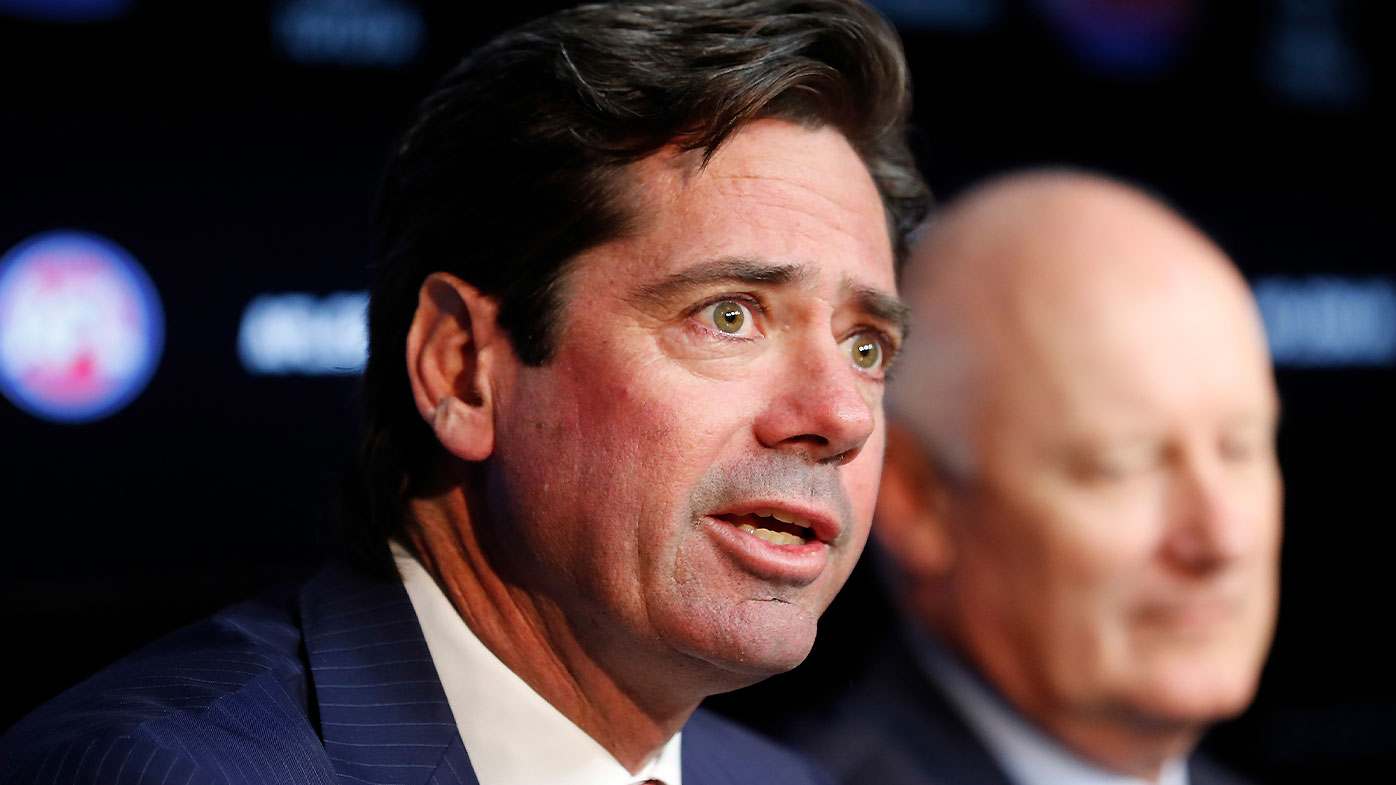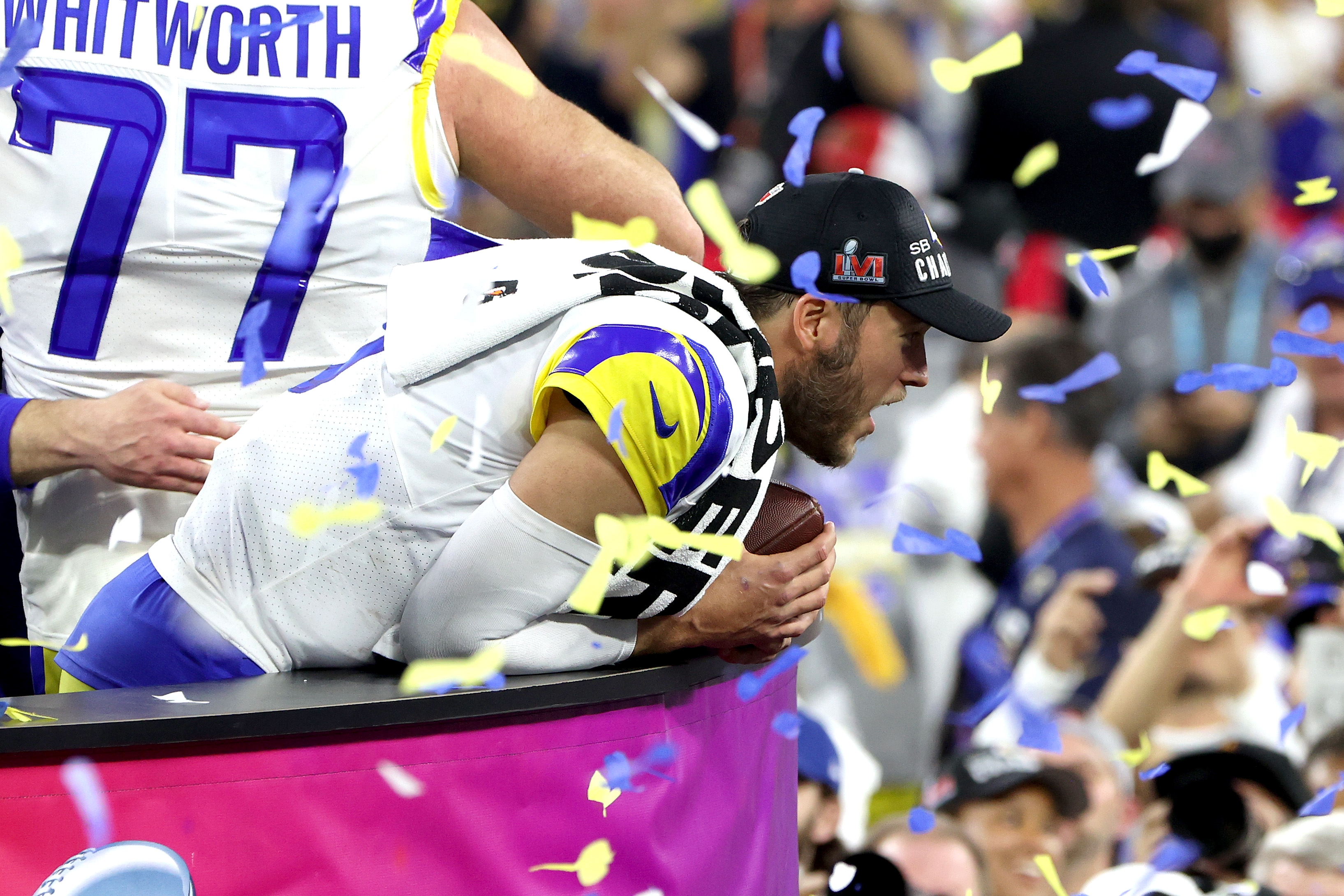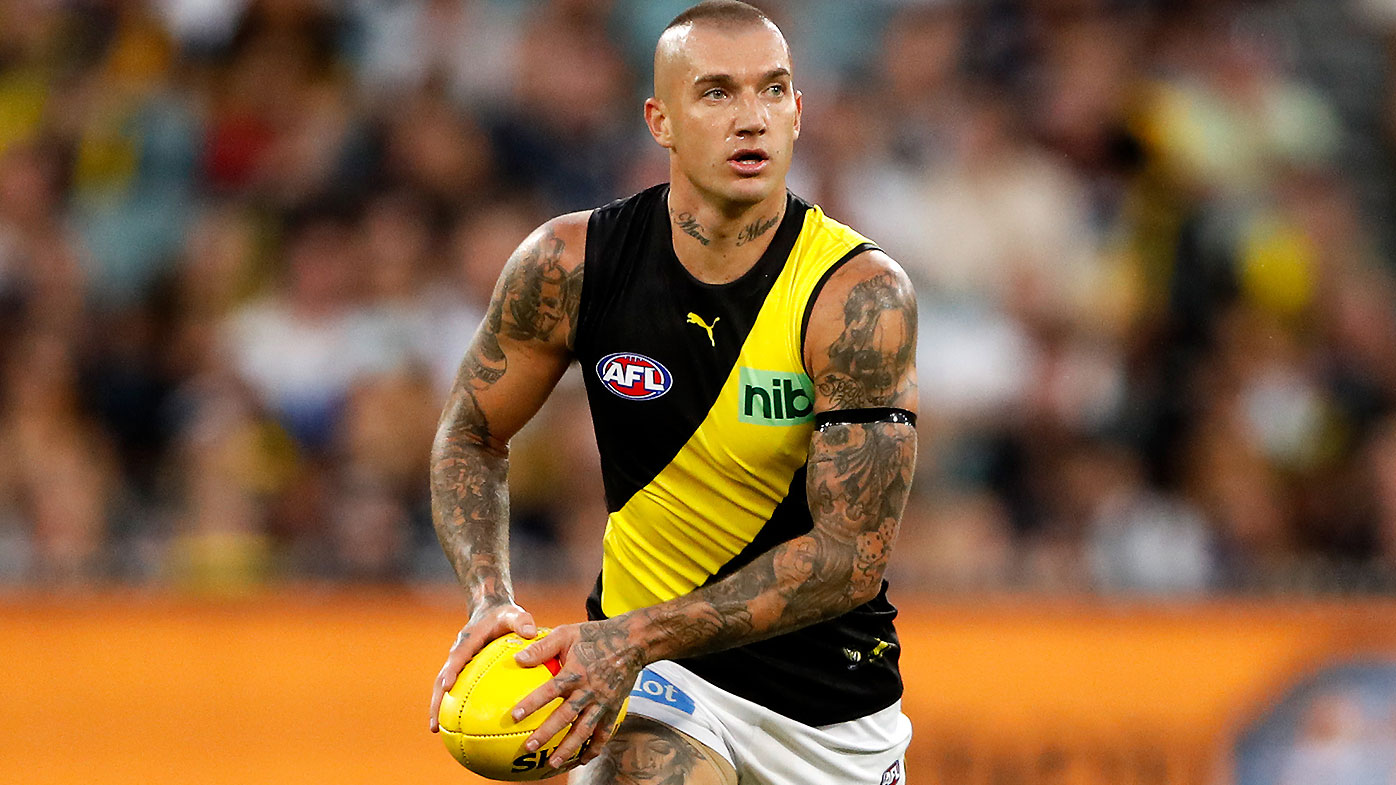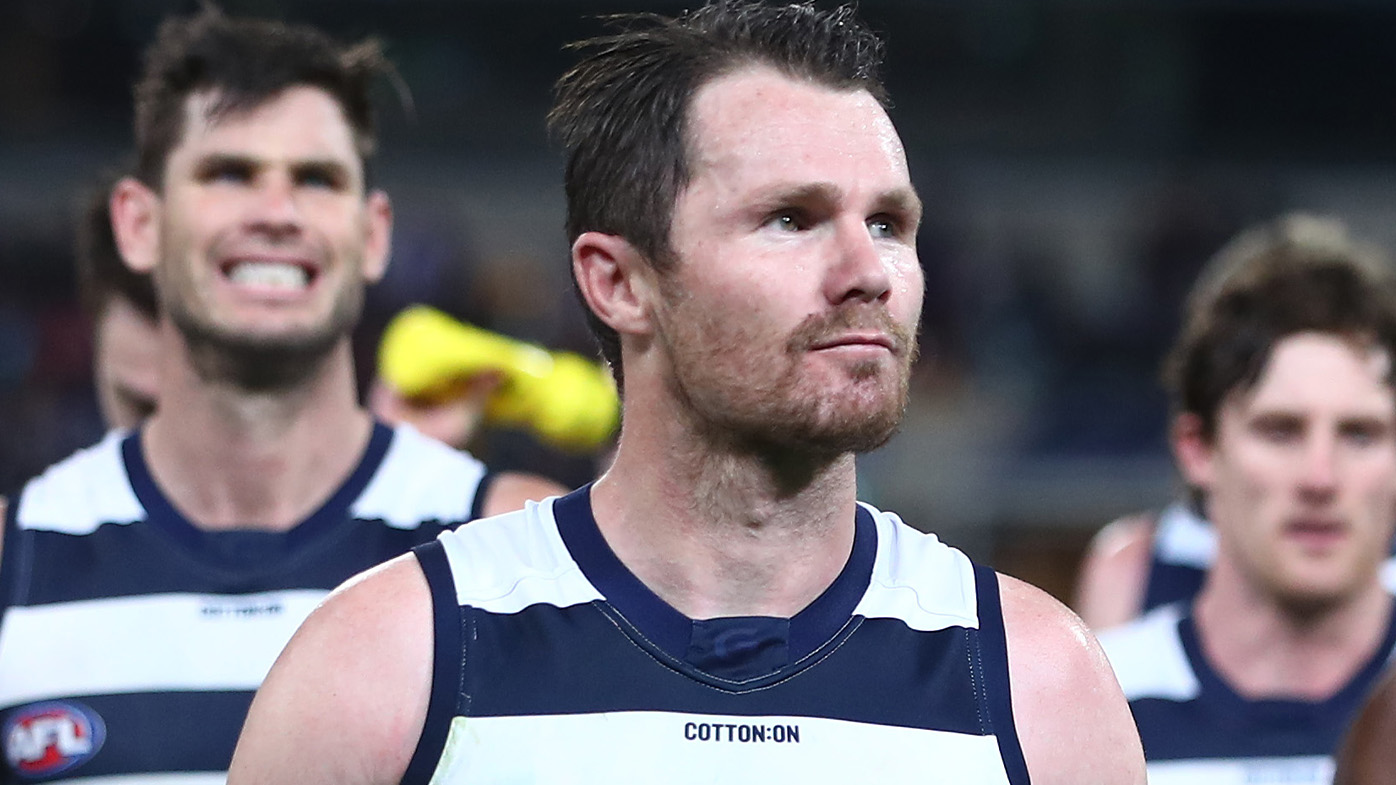*Matthew Pavlich is a Nine sports presenter and co-founder of Pickstar
Sport is big business. Gill McLachlan’s resignation last week reminded me of that.
It took me back to 2017, where I was sitting across the table from the CEO and other AFL executives while in the final, intense stages of negotiations for a new Collective Bargaining Agreement (CBA) for the AFL Players Association (AFLPA).
McLachlan and the AFL, had landed an enormous $2.5 billion broadcast deal back in 2015 that saw a 67 per cent uplift from the previous deal. It confirmed broadcast partner agreements with Seven, Foxtel and Telstra and the players were fighting for a larger portion of that pie via a revenue share model.
READ MORE: Ponga signs monster deal to seal NRL future
READ MORE: Great urges Bombers to go hard for De Goey
READ MORE: AFL’s defiant message amid umpire controversy
I loved the two and fro of those negotiations. The back and forth of views and interests – both self and collective and the various negotiating tactics that were on display. It was an invaluable experience for a recently retired AFL player.
That CBA, which sets out all the minimum terms and conditions of players’ employment with the AFL and its clubs, includes details regarding player wages, annual leave entitlements, player appearances, code of conduct and free agency, is due to expire at the end of this season. The new modelling and negotiations are already underway between the AFLPA and the AFL. It already looms as a long and messy process with the impact of COVID-19 complicating discussions and raising tensions.
McLachlan will want the negotiation process to be handled well and ensure his legacy is rubber stamped upon walking into the sunset. He will also want to have a win over AFLPA CEO, Paul Marsh.
Marsh will be highlighting that AFL players all took pay cuts during the past two years and the whole industry lost numerous coaches and staff due to savage budget cuts to football departments. It could be a drawn out and costly exercise.
HOW DOES AFL STACK UP?
Speaking of costly, at this year’s Super Bowl, broadcaster NBC said that they were expecting the game to generate $670 million in advertising revenue, with the cost of an average 60-seconds of commercial space being $18.7 million.
For context, a 30-second Super Bowl ad back in 1967 was only $56,000. That’s good growth!
The average fan who attended the match at SoFi Stadium spent an average of $234. With 70,000 fans in attendance, that means nearly $16.4 million of hard earned money was handed over at the venue.
In Formula One, Red Bull recently announced a new title sponsor in Oracle on a mammoth deal valued at approximately $411 million across the next five years.
And despite his failure to finish in last Sunday’s F1 race in Melbourne, Max Verstappen is reportedly about to sign a 4-5 year contract extension with Red Bull worth over $76.4 million annually. That’s about $3.82 million per race for the 24-year old. And keep in mind, this is all before any endorsements.
So while there is so much money in sport for some, are athletes paid appropriately across the board?
In 2021 the average AFL salary was $372,000, with only nine players earning more than $1 million. Yes, it is very good money, but is it equitable? Is it in line with other sports? Is it in line with the enormous growth of the game?
The total payments made to the AFL’s top nine executives in 2021 was $9.8 million. Armed with this information, there might be a few within the industry asking the question of the rights to a higher wage.
AFL legend Leigh Matthews recently suggested that men’s player payments have not been in line with the booming TV rights, saying: “Players have been screwed for a long time. It’s a basic fact that the salary cap in the late ’90s was $5 million. Twenty years later it was $15 million. It’s gone up 300 per cent. The TV rights were $40 million then, so they’ve gone up 1,000 per cent.”
As for the 420 players in the AFLW competition, only a handful earn a liveable wage.
The AFLPA has pushed for full-time professionalism for its female players by 2026, with the vast majority of current players needing to balance their footy commitments with work to pay the bills.
This will become a key talking point for both parties, with the league’s rapid expansion from eight to 18 teams in just seven years.
In order to entice some of the coaches and staff lost to the AFL industry, and with TV audiences and digital consumption at an all-time high, the AFL will be pushing to grow the current broadcast deal and find alternative revenue streams for the industry. Equally the AFLPA will be aiming to maximize their share of the pie and achieve a joint CBA between the men’s and women’s competitions.
After years of AFL financial surplus and over achieving, the past few seasons have been a stark reminder for both the players and the AFL, that just because you are the envy of Australian sport, it does not quarantine you from financial challenges.
The AFL’s underlying operating loss for 2021 was $43 million, compared to an underlying operating loss of $22.7 million in 2020.
Back in the US, where players are paid a much larger percentage of league revenues, Major League Baseball has recently gone through a messy 99-day lockout where team owners refused to let players train until a deal was brokered.
After 10 months of negotiations where much disappointment and disillusionment took place, it was finally all settled in a frenzied three weeks where the baseball season began on time as planned. Just in the nick of time.
All-nighters, multiple Zoom sessions and countless livid text messages finally paving a way for a deal to get done.
The AFL and its players may have to get ready for a similar process.
Player unions are crucial – but not at the risk of bringing a sport to the precipice of a labour conflict that could at any point break the sport.
One way of increasing the average AFL player wage is to decrease list sizes. I am an advocate of this, as long as there is a continued effort to provide AFL teams more access to the second tier talent from the SANFL, WAFL and VFL in order to readily be upgraded to an AFL list.
COVID top-up lists have shown this is possible and a competitive way to allow more movement – both ways – between the lower levels and the AFL.
After eight years at the top, McLachlan has decided to step away from the AFL spotlight. Problem is, there is a lot still to do before he packs up his office.
For a daily dose of the best of the breaking news and exclusive content from Wide World of Sports, subscribe to our newsletter by clicking here!





